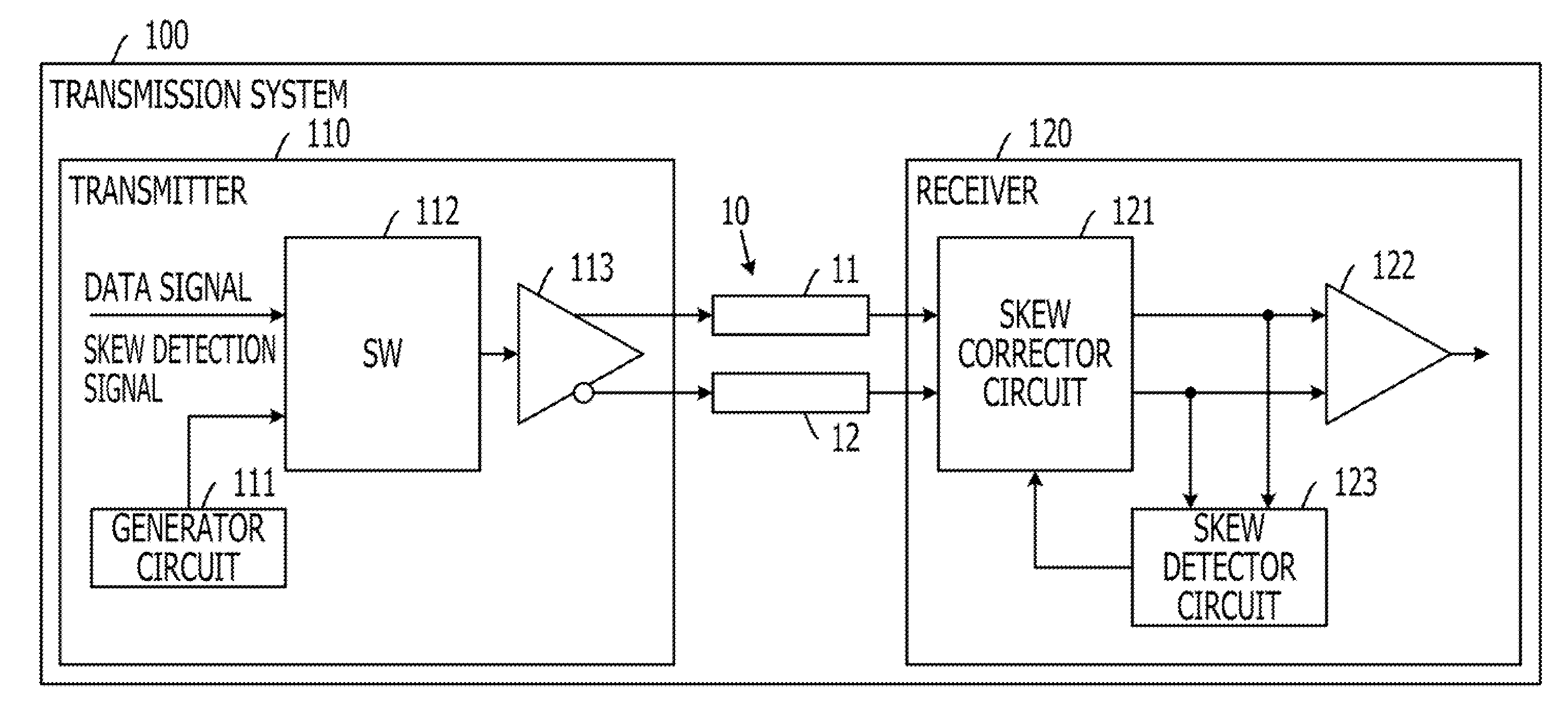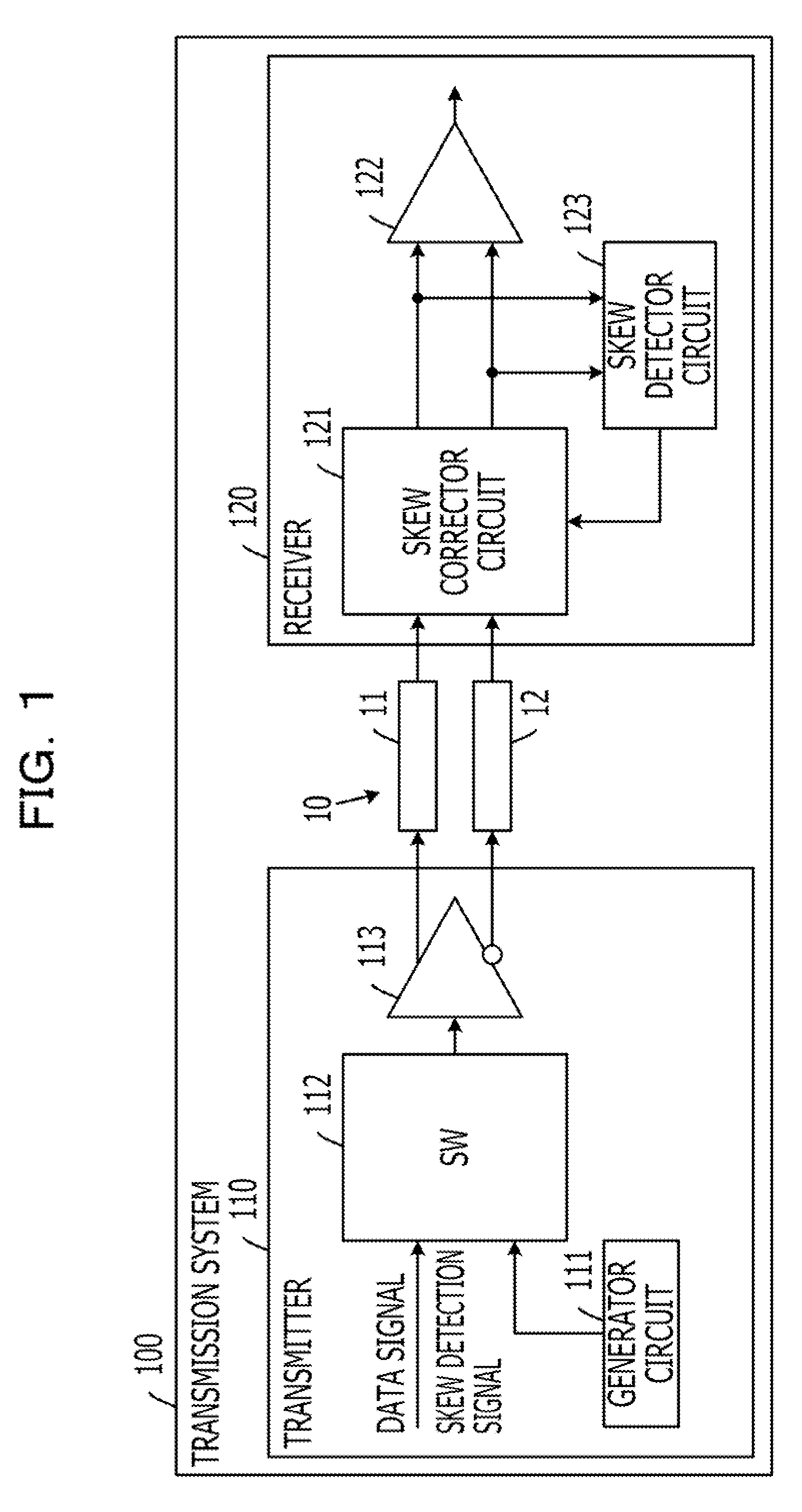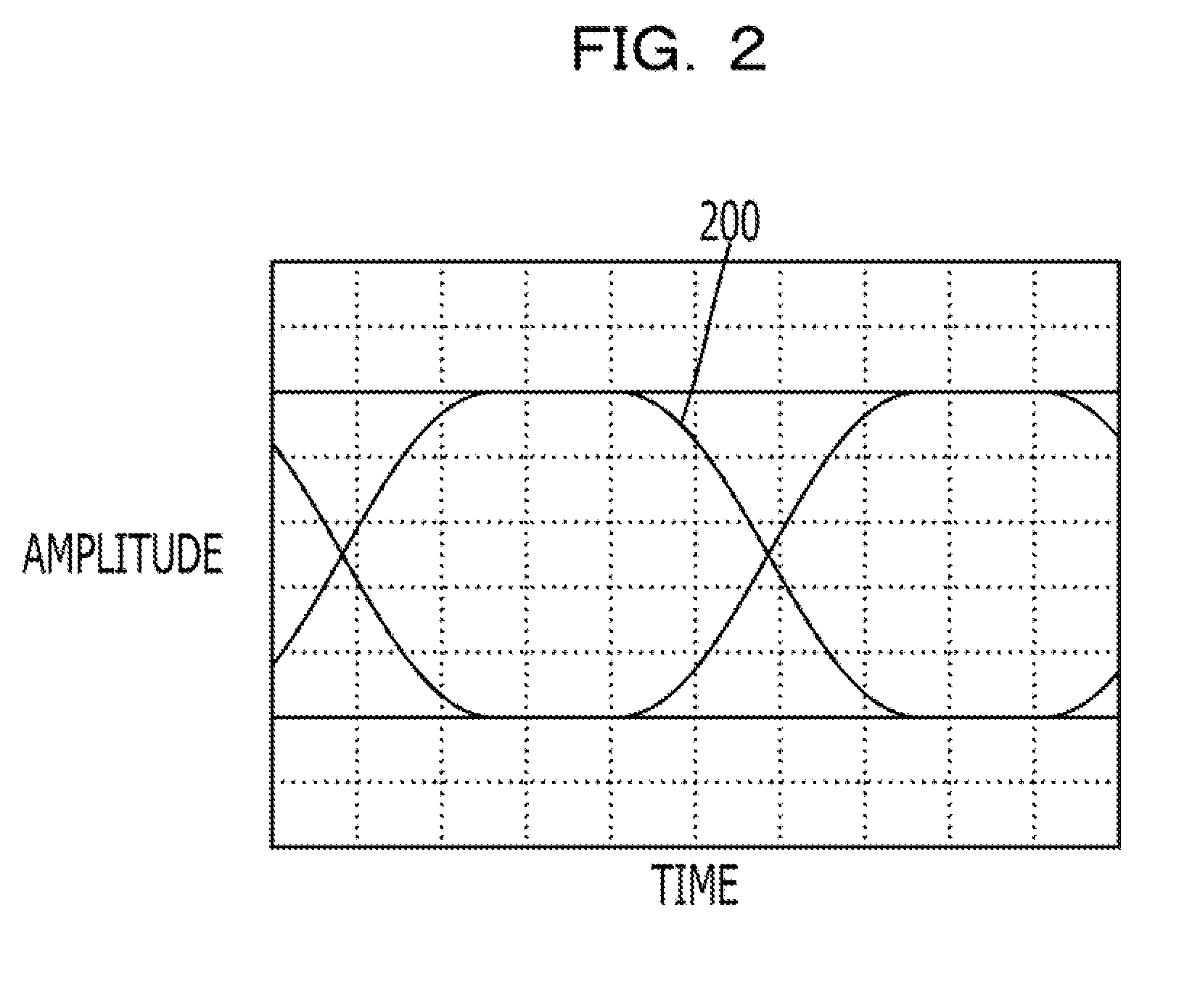Differential signal transmission system and method
- Summary
- Abstract
- Description
- Claims
- Application Information
AI Technical Summary
Problems solved by technology
Method used
Image
Examples
first embodiment
[0036]FIG. 1 is a block diagram illustrating an exemplary transmission system of a first embodiment. Referring to FIG. 1, a transmission system 100 of the first embodiment includes a transmission line 10, a transmitter 110, and a receiver 120. The transmission system 100 transmits a data signal (first differential signal) from the transmitter 110 to the receiver 120 via the transmission path 10. The transmission system 100 is an information processing apparatus such as a server system.
[0037]The transmission line 10 is a transmission path that permits the differential signals (electrical signal) to transfer therethrough. The transmission line 10 includes a positive-side transmission path 11 for transferring a positive-side signal of the differential signals and a negative-side transmission path 12 for transferring a negative-side signal of the differential signals. The transmission path 10 is preferably constructed such that the positive-side transmission path 11 and the negative-sid...
second embodiment
[0065]FIG. 8 is a block diagram illustrating an exemplary structure of a transmission system 100 of a second embodiment. Referring to FIG. 8, elements that may be substantially identical to those illustrated in FIG. 1 are designated with the same reference numerals, and the discussion thereof is omitted here. As illustrated in FIG. 8, the receiver 120 in the transmission system 100 includes a signal ditector circuit 821 in addition to the arrangement illustrated in FIG. 1.
[0066]The signal sensor circuit 821 senses the skew detection signal output by the transmitter 110. More specifically, the signal sensor circuit 821 acquires the differential signal output from the skew corrector circuit 121 to the differential circuit 122, and determines whether the acquired differential signal is a skew detection signal. If the acquired differential signal is a skew detection signal, the signal sensor circuit 821 outputs a sense signal to the skew detector circuit 123.
[0067]The signal sensor circ...
third embodiment
[0077]FIG. 11 is a block diagram illustrating an exemplary structure of a transmission system 100 of a third embodiment. Referring to FIG. 11, elements that may be substantially identical to those illustrated in FIG. 1 are designated with the same reference numerals and the discussion thereof is omitted here. Referring to FIG. 11, the transmission system 100 of the third embodiment includes a control circuit 1110 in addition to the structure of FIG. 1. The control circuit 1110 may be a processing circuit such as a digital signal processor (DSP). The control circuit 1110 may output concurrently a correction command to the transmitter 110 and the receiver 120 at the time of power-on or resetting of the transmitter 110, or at the time at which a user enters a command.
[0078]If no correction command is output from the control circuit 1110, the switch 112 in the transmitter 110 outputs the data signal. If a correction command is output from the control circuit 1110, the switch 112 in the ...
PUM
 Login to View More
Login to View More Abstract
Description
Claims
Application Information
 Login to View More
Login to View More - R&D
- Intellectual Property
- Life Sciences
- Materials
- Tech Scout
- Unparalleled Data Quality
- Higher Quality Content
- 60% Fewer Hallucinations
Browse by: Latest US Patents, China's latest patents, Technical Efficacy Thesaurus, Application Domain, Technology Topic, Popular Technical Reports.
© 2025 PatSnap. All rights reserved.Legal|Privacy policy|Modern Slavery Act Transparency Statement|Sitemap|About US| Contact US: help@patsnap.com



